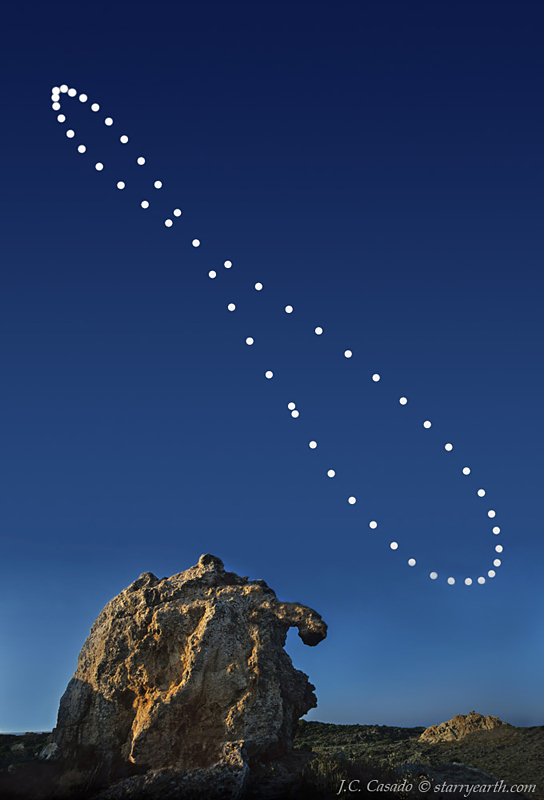Catalonia Solar Analemma
Description
As seen on National Geographic News if you take a picture of the Sun at the same time each several days (on a single frame), the shape traced out by the Sun over the course of a year is an analemma. The Sun’s apparent shift is caused by the Earth’s motion around the Sun when combined with the tilt of the Earth’s rotation axis. The Sun will appear at its highest point of the analemma during summer and at its lowest during winter. Analemmas created from different Earth latitudes would appear at least slightly different, as well as analemmas created at a different time each day.
As noted by the photographer “The above composite photo shows a solar analemma above Girona, Spain. This image has the peculiarity of being a mixed photographic and digital product. To photograph the Sun, a Nikon 35 mm photographic camera with a 35 mm lens was used. The camera was placed on a support and was oriented in a fixed position. To filter the solar light, and to photograph the solar disk, a number 14 welder filter was used. The exposures were acquired every 7 days at 09:15 Universal Time, beginning on March 9, 2003 and ending on March 7, 2004 for total of 53 solar images. If the weather was poor, a photograph of the following day or the previous day was used. The best quality picture of each session was scanned and mounted digitally on the same image using references of the visible horizon. For the background image, Cape Creus National Park was used. The world renowned artist Salvador Dalí defined this place as a “grandiose geologic delirium”. The Cap de Creus or Cape of crosses is located in northeast Catalonia, Spain.

comments (1)